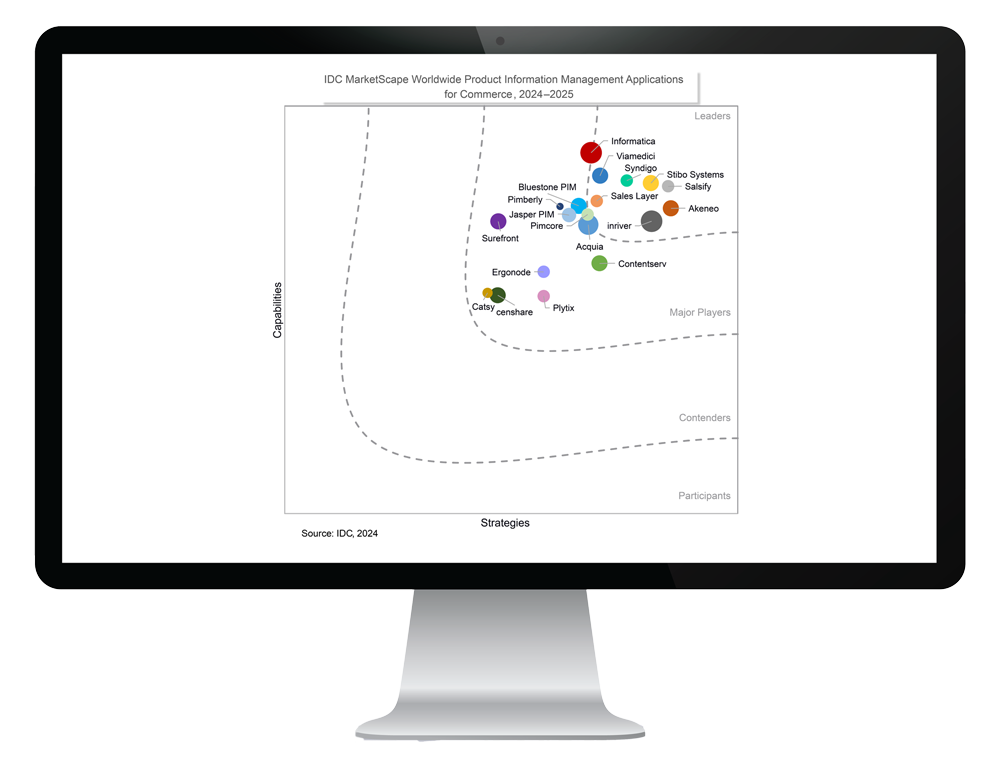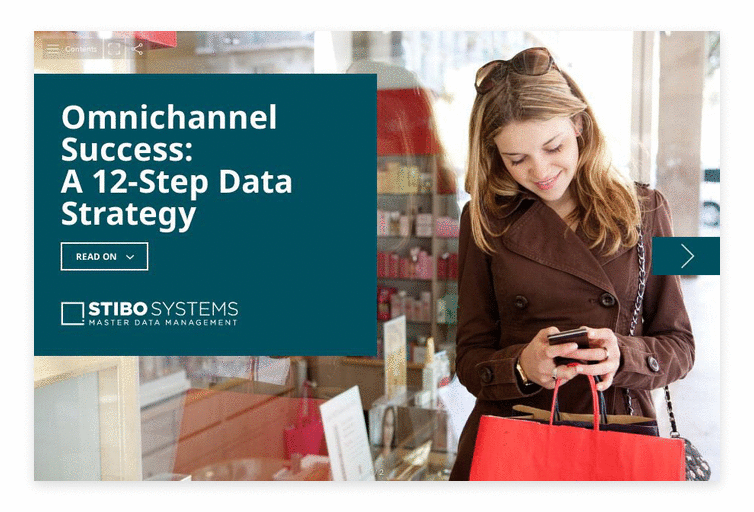In today's fast-paced digital world, consumers are increasingly demanding convenience, personalization and a seamless shopping experience across multiple channels. To meet these evolving expectations, businesses are turning to unified commerce, a transformative approach that breaks down the barriers between online and offline retail. Unified commerce brings together the best of omnichannel strategies, technology integration and customer-centricity to create a cohesive and frictionless shopping journey.
In this blog post, we will explore the concept of unified commerce, its benefits and its potential to revolutionize the way businesses engage with customers. We will delve into how unified commerce bridges the gap between physical stores, e-commerce platforms, mobile apps, social media and emerging technologies, enabling a seamless and consistent customer experience at every touchpoint.

What is unified commerce?
Unified commerce refers to a business strategy and approach that integrates all sales channels, customer touchpoints and backend systems into a seamless and cohesive experience. It aims to provide customers with a consistent and personalized shopping experience across various channels, such as brick-and-mortar stores, online websites, mobile apps, social media platforms and more.
Unlike traditional multichannel or omnichannel approaches, where different channels operate independently and may lack integration, unified commerce focuses on breaking down silos and creating a unified ecosystem. It enables customers to interact with the brand and make purchases through any channel of their choice, while ensuring that their experience remains consistent, convenient and personalized regardless of the channel they use.
Key characteristics of unified commerce include:
-
Channel integration: All sales channels are interconnected, allowing customers to seamlessly transition between them without any disruption or loss of information.
-
Data consistency: Customer and transaction data is centralized and synchronized across all channels, enabling a single view of the customer and facilitating personalized experiences.
-
Inventory visibility: Real-time inventory visibility across channels ensures that customers can access accurate product information, check stock availability and make purchases confidently.
-
Order management: A unified order management system handles orders from all channels, enabling efficient fulfillment, tracking and returns, regardless of where the order originated.
-
Customer experience: Unified commerce aims to deliver a consistent and personalized experience, leveraging customer data and preferences to provide relevant recommendations, offers and support throughout the customer journey.
-
Backend integration: Integration of backend systems, such as inventory management, customer relationship management (CRM) and payment processing, enables streamlined operations and data flow.
By implementing unified commerce, businesses can overcome the limitations of disjointed sales channels and enhance customer satisfaction, loyalty and engagement. It also empowers retailers with greater operational efficiency, improved inventory management and deeper insights into customer behavior across channels, leading to better decision-making and business growth.
REPORT
Stibo Systems Recognized as a Leader in IDC MarketShape: Worldwide PIM Applications for Commerce 2024-2025 Vendor Assessment

Omnichannel vs. unified commerce
Omnichannel and unified commerce are two related but distinct concepts in the retail industry. While they share similarities, it's essential to understand their differences:
Omnichannel commerce: Omnichannel commerce focuses on delivering a seamless and consistent customer experience across multiple channels. It acknowledges the existence of different channels and aims to integrate them for a cohesive shopping journey. In an omnichannel approach, each channel operates independently, but efforts are made to ensure they work together to provide a unified experience. Customers can engage with the brand across various touchpoints and their preferences and data may be shared to offer personalized interactions. However, the channels themselves may still operate with separate systems and processes.
Unified commerce: Unified commerce takes the integration of channels to a higher level by creating a single, centralized system that connects all channels seamlessly. It goes beyond the integration of customer data and personalization, as it encompasses the integration of systems and processes. With unified commerce, all channels are interconnected, sharing real-time information such as inventory, pricing, promotions and customer data. This allows for a consistent and cohesive experience for customers, where they can seamlessly transition between channels without disruptions. Unified commerce eliminates silos and provides a holistic view of the business, enabling streamlined operations and a single source of truth.
In summary, omnichannel commerce focuses on integrating channels to provide a consistent customer experience, while unified commerce goes further by creating a centralized system that connects all channels and streamlines operations. Unified commerce aims to break down barriers between channels, providing a truly unified and seamless shopping experience.
WHITE PAPER
Strategies for a Superior Omnichannel Experience
How to leverage your data to win
customer loyalty in retail.

What are the benefits of unified commerce?
Unified commerce offers several significant benefits for businesses. Here are some key advantages:
-
Seamless customer experience: Unified commerce ensures a consistent and seamless shopping experience across multiple channels. Customers can start their journey on one channel and seamlessly transition to another without any disruptions. This cohesive experience enhances customer satisfaction and builds trust and loyalty.
-
Personalization: With unified commerce, businesses can gather and leverage customer data from various channels to deliver personalized experiences. By understanding individual preferences, purchase history and behavior, businesses can offer tailored recommendations, promotions and product offerings, creating a more personalized and relevant shopping experience.
-
Single view of the customer: Unified commerce allows businesses to have a single view of each customer across channels. This comprehensive understanding enables better customer segmentation, targeted marketing campaigns and improved customer service. It also enables businesses to provide consistent pricing, promotions and product information across all touchpoints.
-
Inventory optimization: By integrating inventory management systems across channels, unified commerce enables real-time visibility into stock levels and locations. This visibility helps businesses optimize inventory, reduce stockouts and efficiently fulfill customer orders. It also enables features like "buy online, pick up in-store" (BOPIS) and ship-from-store, improving convenience for customers.
-
Streamlined operations: Unified commerce eliminates the complexities associated with managing multiple channels independently. It allows businesses to streamline operations by integrating systems such as point-of-sale (POS), inventory management, order management and CRM. This integration enhances operational efficiency, reduces manual work and improves overall productivity.
-
Improved decision-making: With a unified view of customer data and performance metrics across channels, businesses can make data-driven decisions. Access to comprehensive analytics and insights enables businesses to understand customer behavior, identify trends and optimize marketing strategies. This data-driven approach leads to more informed decision-making and improved business outcomes.
-
Enhanced agility and scalability: Unified commerce provides businesses with the agility and scalability needed to adapt to changing market dynamics. It allows for easier integration of new channels and technologies as they emerge, ensuring businesses stay ahead of the competition and meet evolving customer expectations.
-
Increased sales opportunities: By providing a seamless shopping experience, personalized recommendations and convenient fulfillment options, unified commerce can drive increased sales opportunities. Customers are more likely to make purchases when they have a consistent and frictionless experience across channels, leading to higher conversion rates and revenue growth.
Overall, unified commerce empowers businesses to deliver exceptional customer experiences, optimize operations and drive growth. By breaking down channel silos and creating a unified ecosystem, businesses can better meet customer expectations, build long-term loyalty and stay competitive in today's dynamic retail landscape.
Four components of unified commerce
Unified commerce typically consists of four key components:
-
Integration: Integration is at the core of unified commerce. It involves connecting and synchronizing various systems and processes across channels to create a unified ecosystem. This includes integrating inventory management, order management, customer data, pricing, promotions and other operational systems. The goal is to ensure seamless data flow and real-time visibility across all touchpoints.
-
Centralized data: Unified commerce relies on a centralized data repository that consolidates customer information, transaction history, preferences and other relevant data from all channels. This central repository provides a single view of the customer, allowing businesses to deliver personalized experiences, targeted marketing campaigns and consistent interactions across channels. It enables businesses to better understand their customers and make informed decisions based on comprehensive data.
-
Consistent customer experience: A key aspect of unified commerce is providing a consistent customer experience across all channels. This means ensuring that customers receive the same level of service, product information, pricing, promotions and branding regardless of the channel they choose to engage with. Unified commerce aims to eliminate channel-specific silos and deliver a seamless, frictionless experience that transcends individual touchpoints.
-
Operational efficiency: Unified commerce streamlines operations by consolidating systems and processes. This includes integrating point-of-sale (POS) systems, inventory management, order fulfillment, customer service and other operational components. By centralizing these processes and eliminating redundancies, businesses can achieve greater efficiency, reduce manual work and improve overall productivity. This operational efficiency enables businesses to deliver a seamless shopping experience while optimizing resources.
These four components work together to create a unified commerce environment where channels are seamlessly integrated, data is centralized, customer experiences are consistent and operations are streamlined. By embracing unified commerce, businesses can enhance customer satisfaction, drive growth and thrive in the ever-evolving retail landscape.
CHECKLIST
Omnichannel Success: A 12-Step Data Strategy

Unified commerce is the future of retail
As consumer expectations continue to evolve, businesses need to adapt and provide a seamless, integrated shopping experience across multiple channels. Here is why unified commerce is poised to shape the future of retail:
-
Customer-centric approach: Unified commerce puts the customer at the center of the retail experience. By providing a consistent and personalized journey across channels, businesses can meet the rising expectations of today's consumers. Customers expect convenience, flexibility and a seamless transition between online and offline channels and unified commerce fulfills these demands.
-
Seamless shopping experience: Unified commerce eliminates the barriers between different channels, enabling customers to start their shopping journey on one channel and continue on another without disruptions. Whether it is browsing products online, visiting a physical store or making a purchase through a mobile app, customers expect a cohesive experience. Unified commerce ensures that the transition is smooth, maintaining a consistent brand image and delivering a seamless shopping experience.
-
Data-driven personalization: With unified commerce, businesses can gather and leverage customer data from multiple touchpoints. This data allows for deep insights into customer behavior, preferences and purchase history. By using this information to personalize interactions, businesses can deliver targeted recommendations, promotions and experiences, creating a more engaging and relevant relationship with customers.
-
Operational efficiency: Unified commerce streamlines operations by integrating various systems, such as inventory management, order fulfillment and customer service. By consolidating processes and data, businesses can optimize efficiency and reduce operational complexities. This leads to improved inventory visibility, faster order processing and better customer service, ultimately enhancing the overall operational efficiency of the business.
-
Agility and adaptability: The retail landscape is constantly evolving, with emerging technologies and changing consumer behaviors. Unified commerce provides businesses with the agility to adapt to these changes. By integrating new channels and technologies as they emerge, businesses can stay ahead of the competition and meet the evolving needs of their customers.
In conclusion, unified commerce is the future of retail as it aligns with customer expectations for seamless experiences, personalized interactions and convenience across channels. By embracing unified commerce, businesses can thrive in the ever-changing retail landscape and build strong, long-term customer relationships.
EXPLORE
Master Data Management for Retailers






































































































































































































